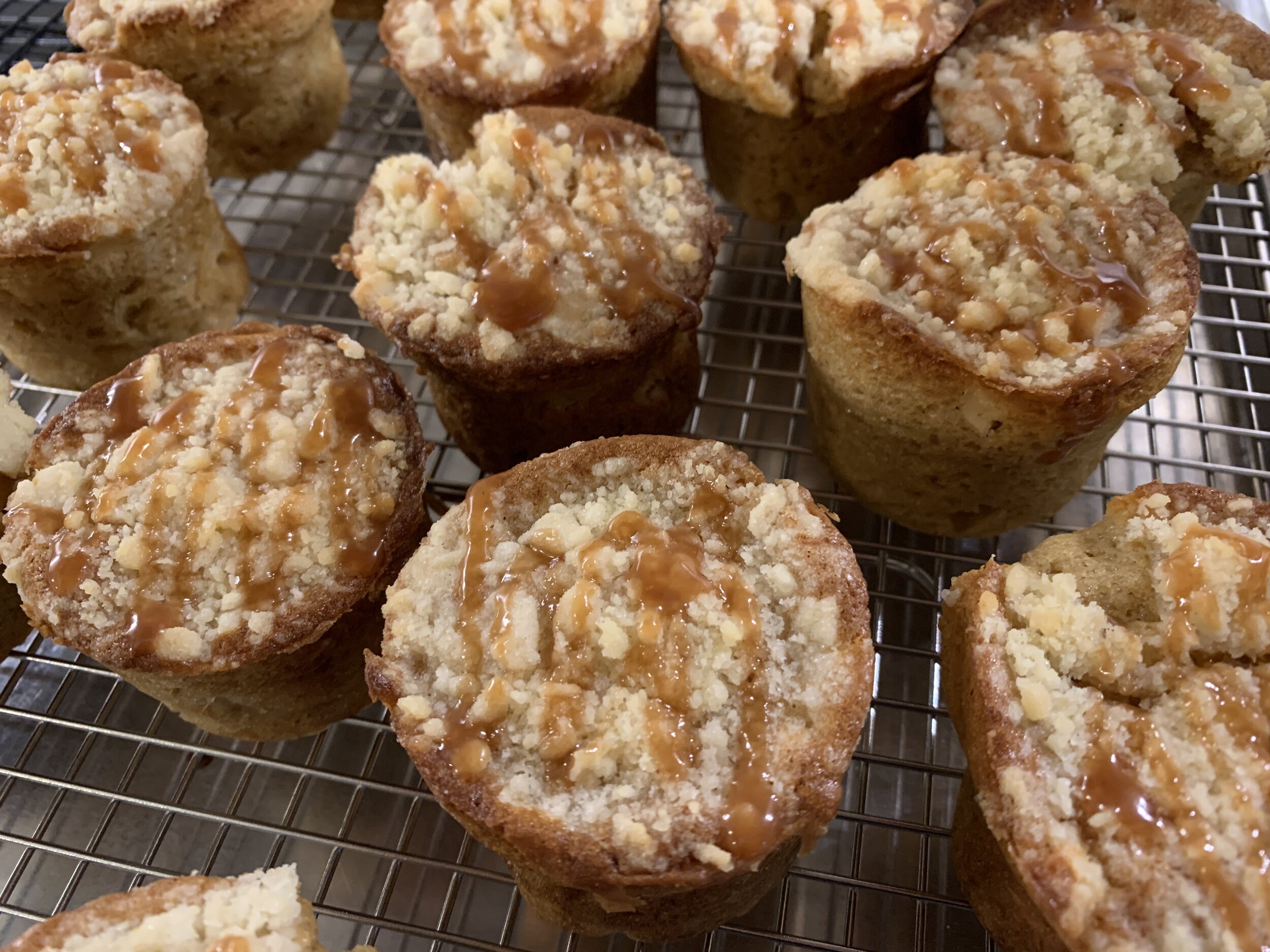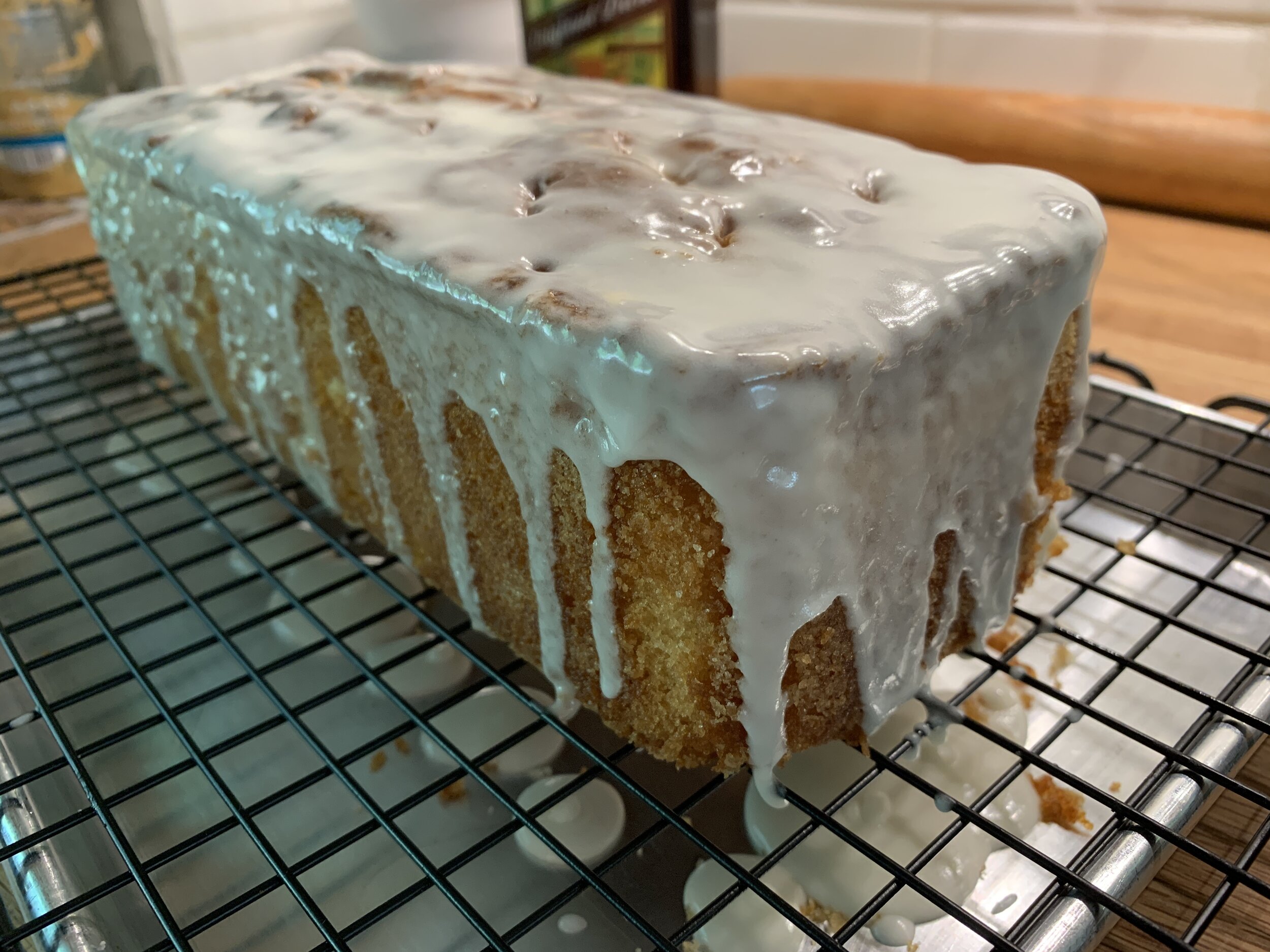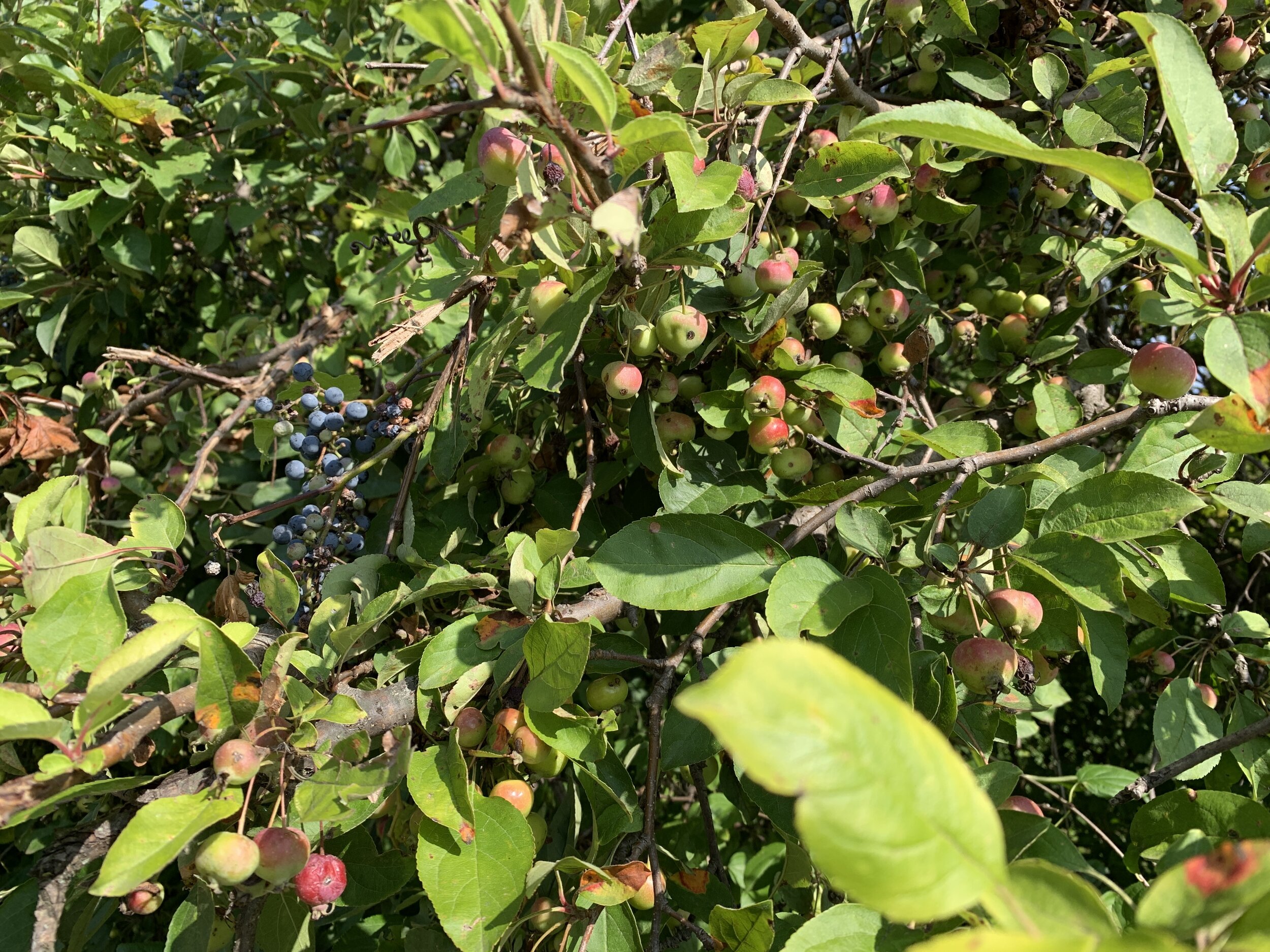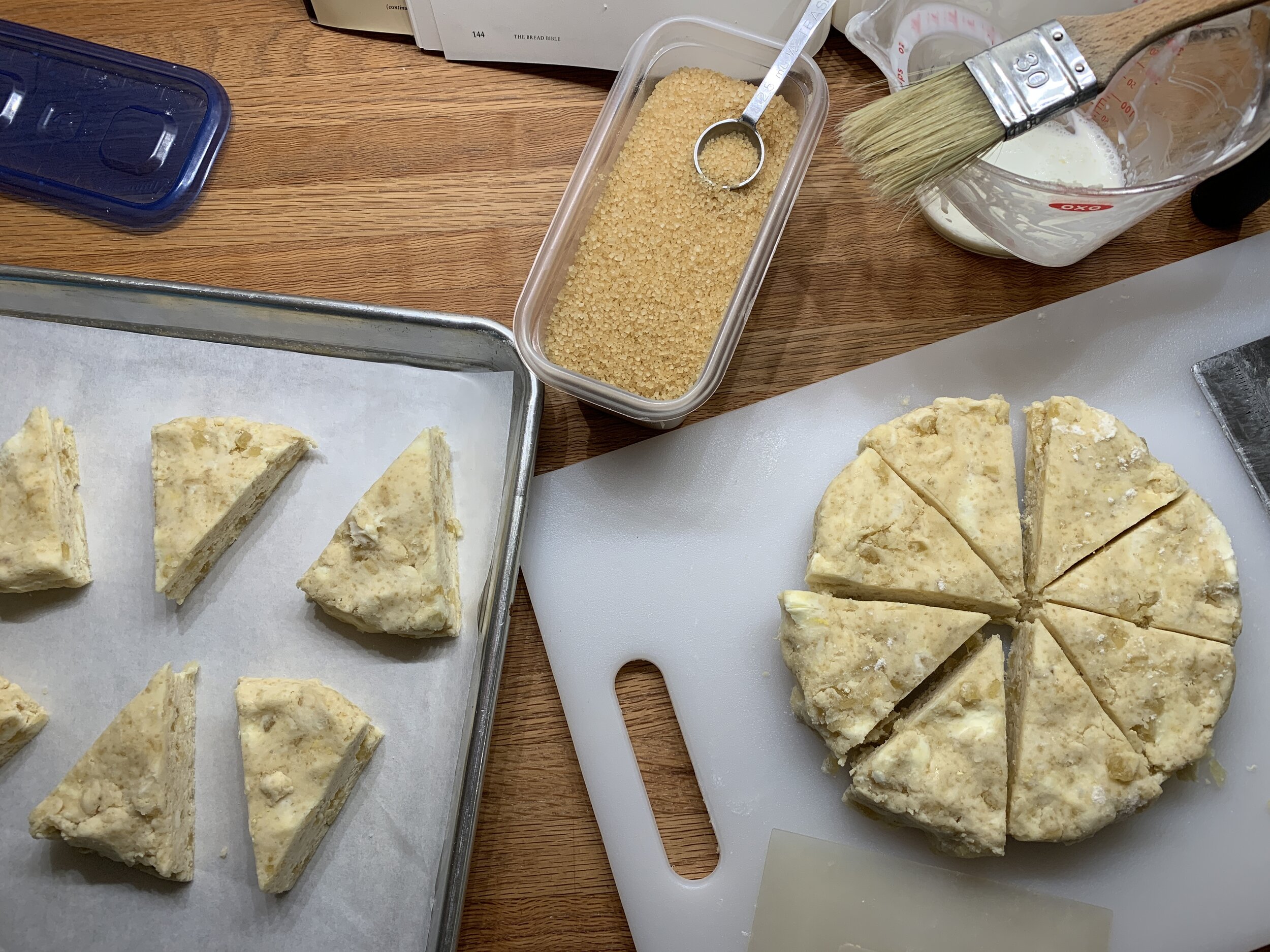Caramel apple (or pear) streusel cakes
/Isn’t it great when you come across a recipe to which you add your own touches, make many times over and never seem to tire of? This is one of those.
This recipe is my take on an apple sour cream cake from Genius Kitchen, a recipe I came across a couple of years ago. It’s not unlike a blueberry muffin recipe I used to make in days of yore. I’ve made it as the apple version a number of times and it’s always a pleaser but then I thought - hey, how about pear?? Why sure!
Heat the oven to 350ºF. Grease a 9x13 pan OR line muffin tins with papers OR have ready small silicone molds of choice. As some of you know, I’m a huge fan of smaller portions so the latter two options appeal to me.
For the base recipe, prep 2 cups apples or ripe pears (about 2 large) by peeling, coring and chopping them. I often have Fujis around for general eating so I’ll use those but I also like Jonamacs, Jonagolds, Galas or Golden Delicious for this type of baking. Bosc is my go to pear.
In a separate medium bowl blend 260 g/2 cups all purpose flour (you can replace 20-25% of that with whole wheat pastry flour or spelt) with one teaspoon baking soda, one teaspoon baking powder and 1/4 teaspoon salt. You can add cinnamon or spices as well, although I usually save my spice for the streusel.
In the bowl of a stand mixer fitted with the paddle, cream 113 g/4 ounces unsalted, room temperature butter with 175 g sugar (I like a mix of 75 g dark brown sugar and 100 g granulated cane sugar or ground raw sugar) for 2-3 minutes. Scrape down the bowl and add 1 teaspoon vanilla, 2 teaspoons boiled cider (optional) and 2 large eggs. Blend and beat well to lighten the mixture.
Add the dry ingredients in three additions, alternating with one cup sour cream (or crème fraiche or full fat yogurt), beginning and ending with the dry ingredients and mixing just until combined. Stir in the chopped apples or pears.
You have the option for a streusel topping by mixing 1/2 cup toasted and chopped nuts of choice (pecans, walnuts, almonds or hazelnuts are all good in my book!) with a teaspoon of cinnamon or spice mix of choice, 1/2 cup light or dark brown sugar and 2 teaspoons melted unsalted butter - once blended, sprinkle it over the cakes.
Portion the batter into your chosen pan or mold. I made two different sizes in my flexis.
Bake about 20-25 minutes (for small cakes) or 35-40 minutes if making a 9x13 size.
Give them a 5-10 minute cool before gently removing them from the molds, then set them on a wire grid to cool. I often drizzle some caramel on top once out of the oven.
You can leave off the streusel if you plan to garnish the small cakes with your favorite Swiss meringue buttercream like caramel apple cider or a simple whipped caramel mascarpone cream. Yum. Truth be told, I’ve combined a streusel and buttercream garnish and love the combo of the light creamy SMBC with the bit of crunch in the streusel. Yup.
Happy baking. Stay safe, stay healthy and be at peace.


































